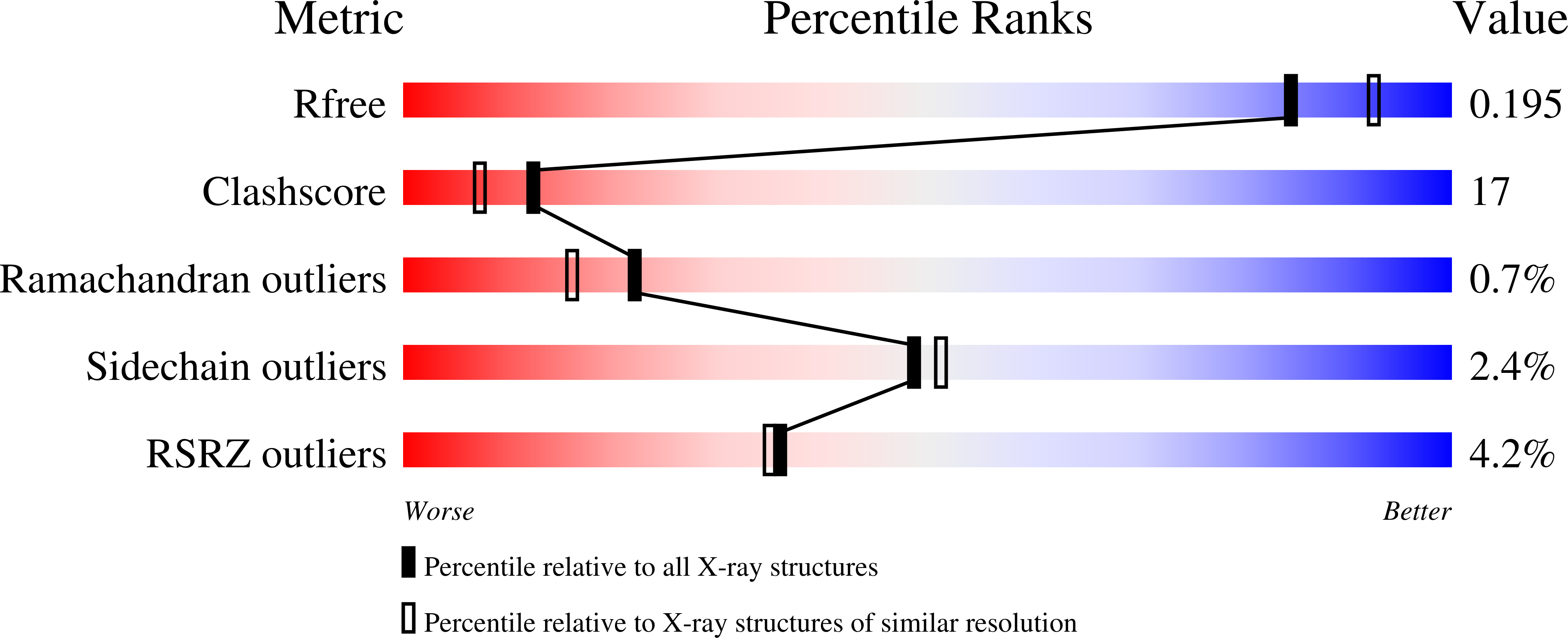Intermonomer interactions are essential for lysosomal enzyme binding by the cation-dependent mannose 6-phosphate receptor.
Olson, L.J., Sun, G., Bohnsack, R.N., Peterson, F.C., Dahms, N.M., Kim, J.J.(2010) Biochemistry 49: 236-246
- PubMed: 19928875
- DOI: https://doi.org/10.1021/bi901725x
- Primary Citation of Related Structures:
3K41, 3K42, 3K43 - PubMed Abstract:
The 46 kDa cation-dependent mannose 6-phosphate receptor (CD-MPR) plays a key role in the delivery of lysosomal enzymes to the lysosome by binding newly synthesized mannose 6-phosphate (Man-6-P)-containing acid hydrolases and diverting them from the secretory pathway. Previous studies on a truncated form of the receptor comprised of only the soluble extracellular region (sCD-MPR, residues 1-154) have shown that the CD-MPR exists as a homodimer and exhibits two distinct conformations in the ligand-bound versus ligand-unbound states, involving changes in quaternary structure and positioning of loop D, the residues of which form a side of the binding pocket in the presence of ligand. To determine the role of intermonomer contacts in the functioning of the sCD-MPR, site-directed mutagenesis was used to generate a construct lacking a salt bridge (Glu19-Lys137) that tethers the N-terminal alpha-helix of one subunit to loop D of the other subunit in the ligand-bound form. Here we show by surface plasmon resonance analyses and NMR spectroscopy that the elimination of this intermonomer salt bridge significantly decreases the binding affinity of the mutant receptor (E19Q/K137M) toward lysosomal enzymes and Man-6-P. Analyses of the E19Q/K137M mutant receptor crystallized under various conditions revealed an altered quaternary structure that is intermediate between those observed in the ligand-bound and ligand-unbound states. Taken together, the results demonstrate a key role for intermonomer interactions in the structure and functioning of the CD-MPR.
Organizational Affiliation:
Department of Biochemistry, Medical College of Wisconsin, Milwaukee, Wisconsin 53226, USA.


















